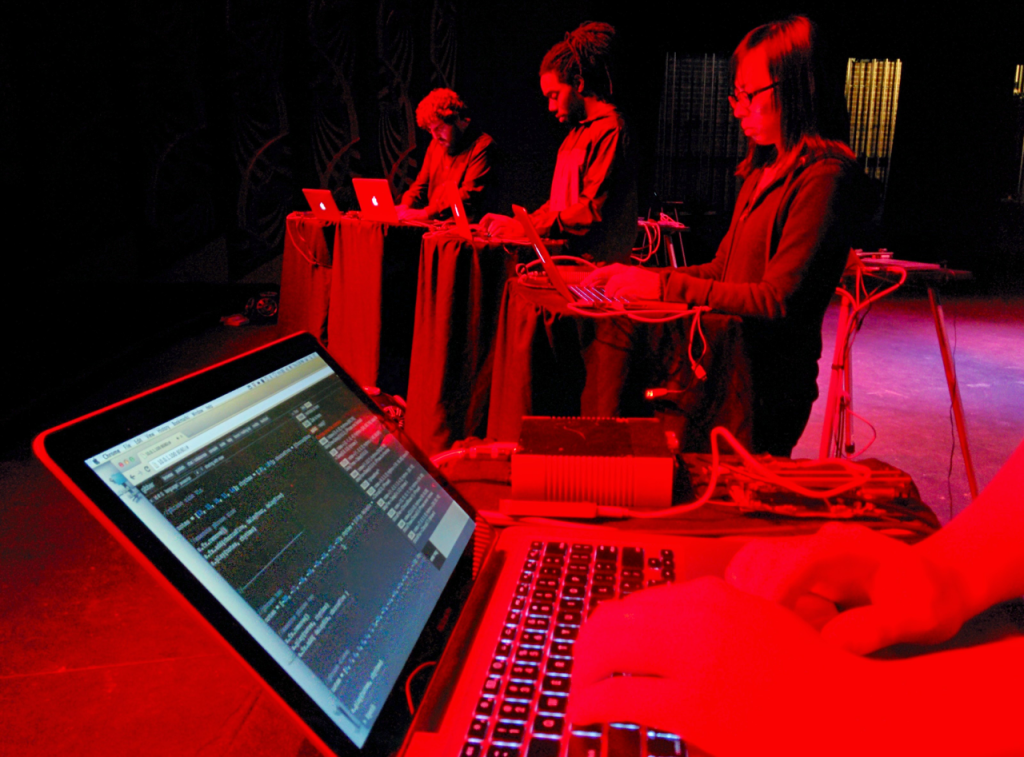On June 9th, an Algorave was held in Santa Barbara that primarily consisted of members of MAT 276IA, a class I taught on sound synthesis and algorithmic composition in the Media Arts & Technology program at UCSB. Everyone except for the guest headliner, Chad McKinney, used Gibber in their performances. I was really happy with the performances and it was great to hear all the different types of music that came out; no two were alike.
One other notable aspect of the concert was the use of a new system for ensemble performances that I’ve named Gabber. Gabber provides clock synchronization and a bunch of other neat features. I’ll be presenting it at ICLC (International Conference on Live Coding) in July. Thanks to Hafiz, Anis, and Marco for being willing guinea pigs with the new system.
Highlights below:
[vimeo clip_id=130595069 width=640]




